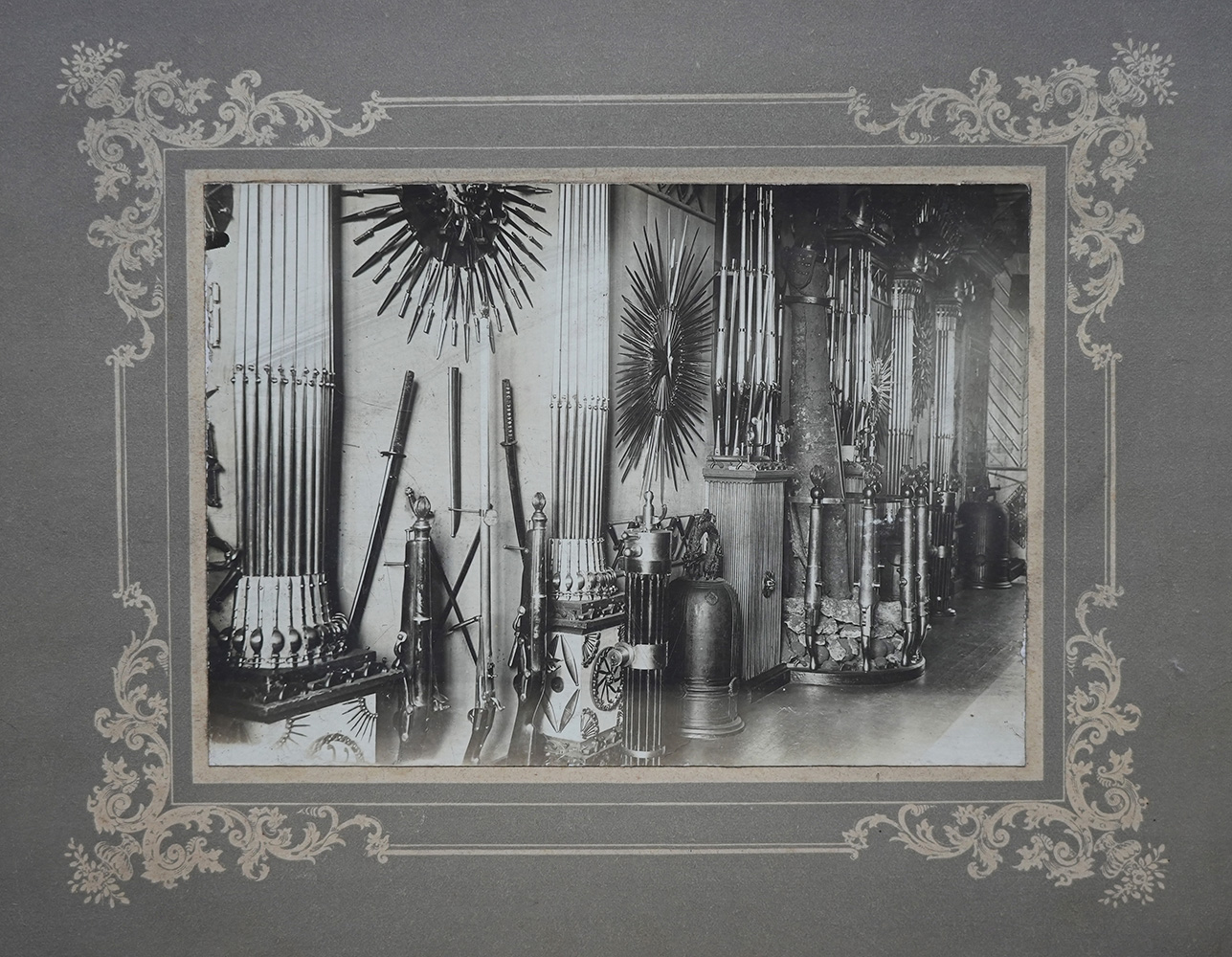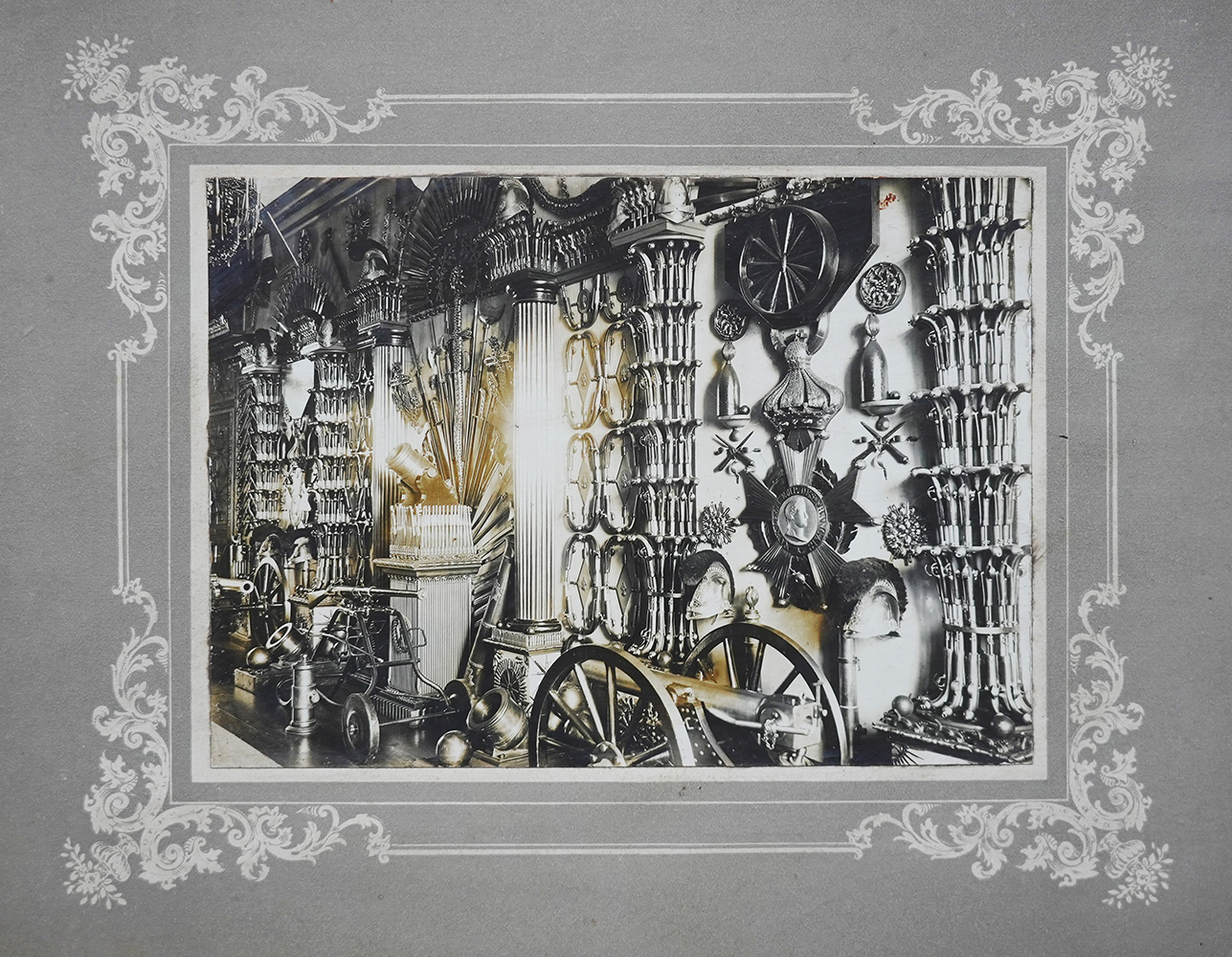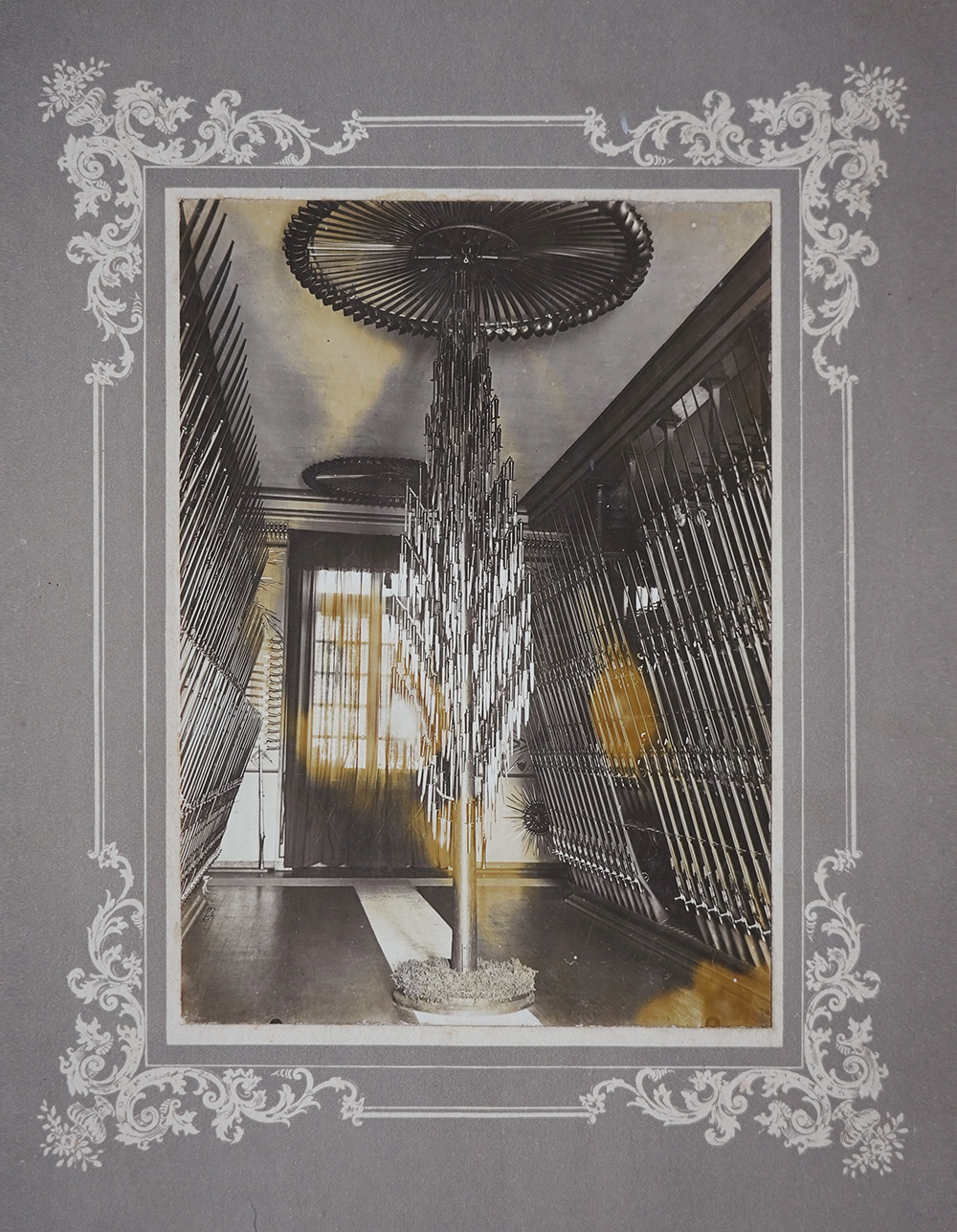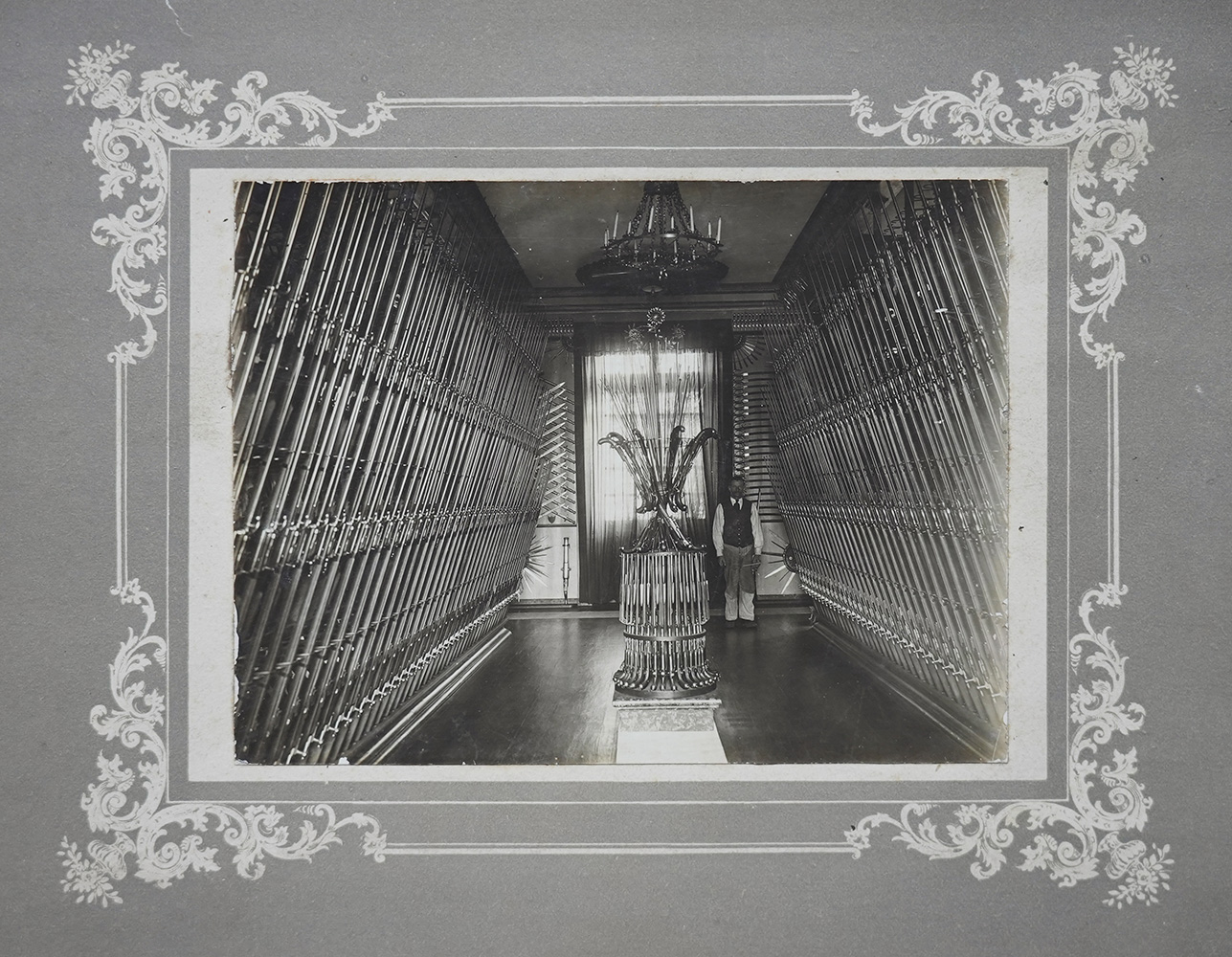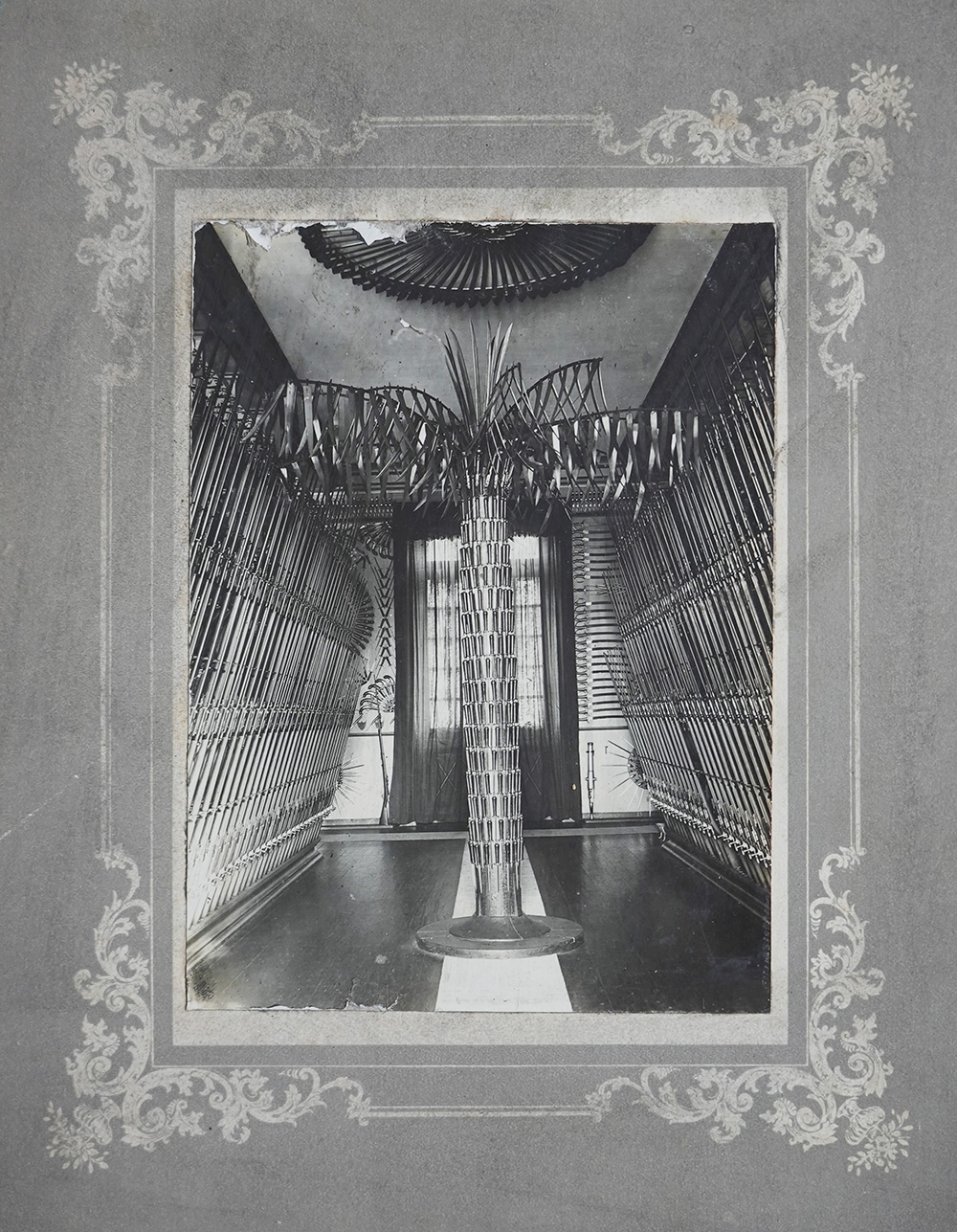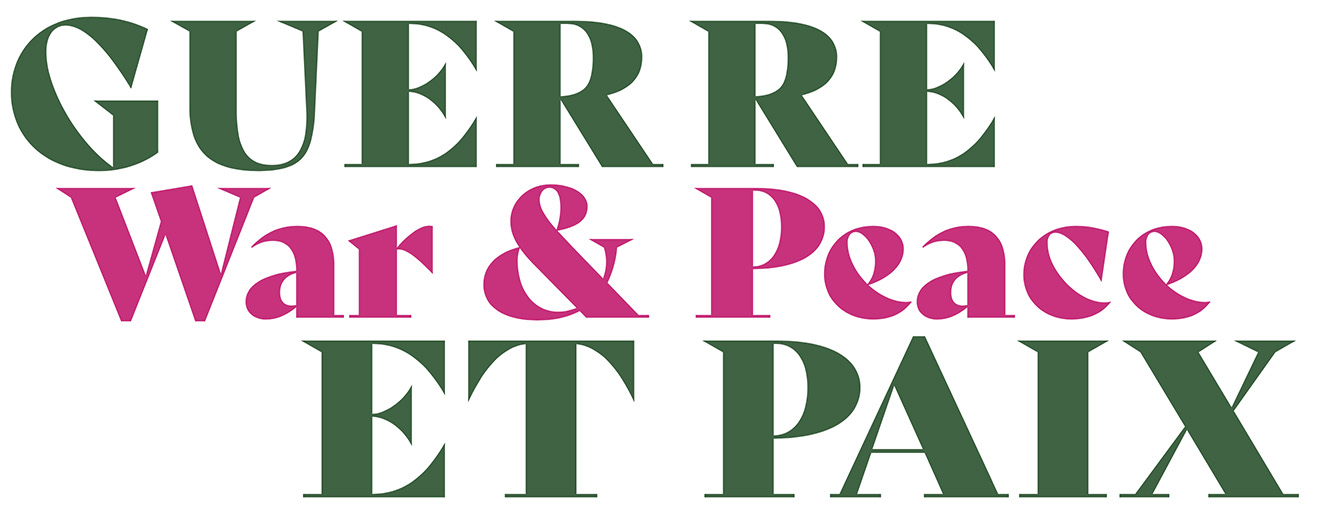
#II REVU – additional text / texte supplémentaire
Living Space of Battle / Lukas Birk
In Mr. X’s family, it is not only tradition to collect weaponry; it is a family passion. With a collection that reaches back to Roman times, Mr. X has always had a keen interest in the period of more industrialised firearms. The idea that a soldier might hold an ancient tool of war like a sabre in one hand and a musket in the other thrilled Mr. X during his teenage years. By the time he was in his twenties, he had expanded the family’s collection and decided to create elaborate displays in one of his chateaus. This was just between the Great Wars.
War has often been described as the most profitable of enterprises, a commodity that fuels the engines of industry and commerce. Behind the rhetoric of patriotism and national defence lies the reality: war is big business, with vast fortunes to be made from the production of weapons, equipment, and military technology. Mr. X was fully aware of this and founded his own arms manufacturer, producing primarily semi-automatic pistols. Although his national army didn’t stand up to the great evil invader, the invader needed weapons too, so business was good despite everything. Winners know how to win even when they lose. But enough of that; let’s take a tour through Mr. X’s chateau.
In the North wing, you will find the centrepiece: a cannon that has been at the bottom of the sea for 141 years, coming from Saint Vast La Hange. It was part of the armament of one of the 12 vessels of Admiral Courville, burned on June 1, 1692, and removed from the sea bottom in August 1833. On each side of the cannon are two 1870 machine guns and two Chinese bells from the Chinese expedition of 1884 (Picture 1).
In the south side wing at each end are two German cannons made by Krupp (still one of the finest arms makers today). Taken from China in 1884, in the middle is an English rifle (model 1846). And above is an imitation of Charlemagne’s sword composed of old pieces of weapons, with at each end the imitation of the Knight’s Cross of the Legion of Honour and Officers of the Legion of Honour, made up of old pieces of weapons as well (Picture 2).
The mansion also features humorous installations such as a Cypress made of Marine daggers (Picture 3), a sheaf formed from rifle sticks (Picture 4), lovely flower bouquets made of bayonets (Picture 5), and palm trees shaped like sabre blades with the trunk of the tree made up of daggers (Picture 6).
Mr. X died in 1996 without heirs. Widely known for defending the need for weapons until his last breath. “War is a part of humanity. If humans don’t fight, how can they progress?” he was often heard saying.
Here’s a part of his rather short, candid, and very unpopular biography:
“The ebb and flow between war and peace is a timeless dance that humanity has performed for centuries. It’s like a cosmic tango, with nations and individuals alike twirling between moments of conflict and serenity, each step echoing through the annals of history and contemporary world affairs. I was always interested in gathering the remains of this part of human history and transforming it into something we can admire. A piece of art, one could say. A transformation that makes us aware that war is part of us, even in times of peace.
In today’s global arena, the rhythm of this dance has obviously changed. I am 90 years of age. The geopolitical tensions simmer like never before. The profits of weapons have increased so much, I can only think of what a small player I was back in the day. Now, countries start whole wars passively to move political interest in disguise of freedom. The people don’t even know why they fight; that is how good propaganda works.
In times of peace, like in today’s Europe, humans often forget the suffering endured during times of conflict. The scars of war fade from collective memory as societies focus on progress and prosperity. Comforted by the illusion of stability, people become complacent, neglecting the lessons of history and the plight of those still affected by violence and injustice. Yet, beneath the veneer of tranquillity, the seeds of discord linger, waiting to sprout anew when humanity’s collective memory once again fades, and the spectre of conflict rears its ugly head. I warn all of you younglings. One day you will see what I saw, and you will need to make choices…”
Not much remains of Mister X’s legacy. His company has been bought off, and his memory almost forgotten. Yet here we have the photographic remains of one of Europe’s great collectors of arms who made himself a living space of battle.

